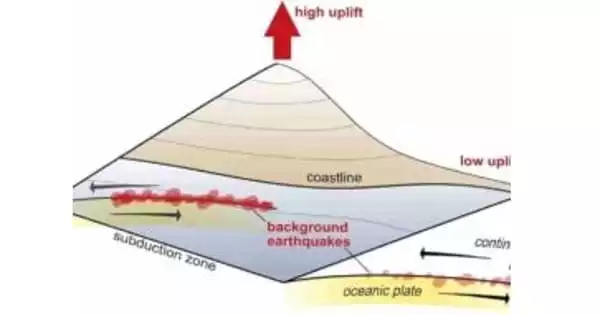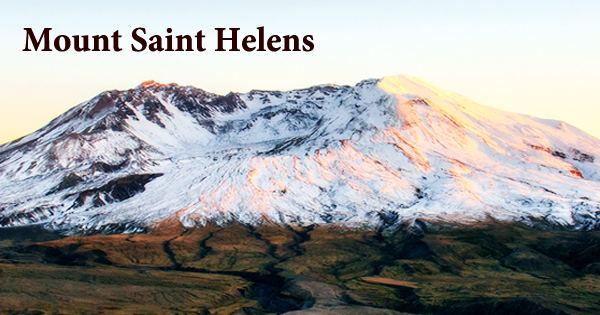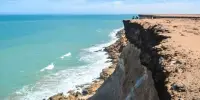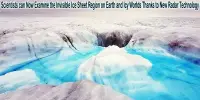After the stone strikes the water, ripples spread outwards in all directions from the center. An earthquake releases energy in the form of shock waves, or seismic waves, which ripple across the earth’s surface. The seismic waves produced as they move out from an earthquake’s epicentre vary.
Seismic waves from earthquakes should travel in a four-leaf clover pattern, according to physics, but in reality, they behave more like ripples in a pond. The pattern was discovered in low-frequency seismic waves, which can topple structures, according to new research. The study looked at tiny earthquakes in northern Oklahoma and potentially transform how scientists think about earthquake damage.
New research from The University of Texas at Austin may revolutionize the way scientists think about earthquake damage. The researchers reviewed data from one of the densest seismic arrays ever deployed and discovered that earthquakes release their strongest seismic shockwaves in four opposing directions. The effect, which leaves a pattern resembling a four-leaf clover, has been known for decades but never measured in such vivid detail.
According to Daniel Trugman, an earthquake geophysicist at the UT Jackson School of Geosciences’ Department for Geological Sciences, the study looked at only one form of seismic shaking generated by very tiny earthquakes in northern Oklahoma.
What occurs when there’s an earthquake is that chunks of fractured rock inside the fault zone start to move around like pinballs, What’s important in these data is that we’re seeing a variance in ground motion close to the source, and it’s not accounted for in any form of hazard model.
Daniel Trugman
“What’s important in these data is that we’re seeing a variance in ground motion close to the source, and it’s not accounted for in any form of hazard model,” Trugman said. He went on to say that efforts were already underway to see how the phenomenon manifested itself in California’s major fault systems.
The study was published in Geophysical Research Letters in September and is based on measurements of two dozen small earthquakes recorded by the LArge-n Seismic Survey in Oklahoma (LASSO), an array of 1,829 seismic sensors deployed for 28 days in 2016 to monitor a remote corner of the state measuring 15 by 20 miles.
When earthquakes occur, they produce a thunderclap of seismic energy at a variety of frequencies, although the actual ground shaking humans experience ranges from roughly 1 hertz to 20 hertz. The researchers discovered that low-frequency radiation ranging from 1 to 10 hertz blasted from the fault in four directions but scarcely registered outside of the four-leaf clover pattern. This is significant because low-frequency waves are more dangerous to buildings. The four-leaf clover pattern was not discovered for higher frequency waves, which traveled in all directions with equal strength, like ripples in a pond.
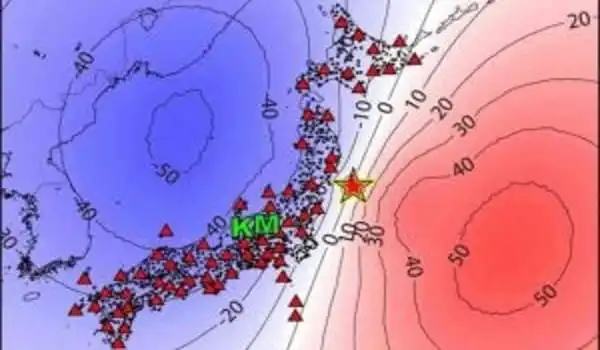
According to co-author Victor Tsai, a geophysicist at Brown University, the reason the Earth shook unevenly at different frequencies could be due to the complicated geometry of earthquake faults and the broken-up material crammed between them.
“What occurs when there’s an earthquake is that chunks of fractured rock inside the fault zone start to move around like pinballs,” he explained. The jostling fragments divert the energy haphazardly, but at lower frequencies, seismic waves simply bypass the rough geologic jumble near the fault, traveling in a lovely four-leaf clover pattern, just as physics predicts.
This means that while a person may feel the same shaking regardless of where they are, structures, which are sensitive to low frequency vibrations, will feel the earthquake considerably more powerfully along the lines of the four-leaf clover pattern.
Geophysicists have known about this trend for a long time; it’s even taught in seismology 101. However, evidence of its impact has been scant until now. This is due to the fact that seismic waves, regardless of frequency, are refracted across long distances, smoothing out variances and making earthquakes appear the same in all directions.
However, the pattern should be different near the epicenter of an earthquake. This is where the LASSO array came into play. Its densely packed sensors recorded earthquakes as they occurred, collecting data from hundreds of places in northern Oklahoma that the U.S. The array was sponsored and installed by the Geological Survey, and it is now publicly available online.
Trugman created algorithms to filter the LASSO data in order to test their theory regarding uneven shaking near faults. Each earthquake produced a four-leaf clover pattern of shaking at low frequencies; at higher frequencies, there was no obvious pattern, just as Tsai expected.
Although the tremors detected by the LASSO array were scarcely audible, the physics that caused them should be the same for larger earthquakes. The researchers have already begun looking into larger faults to see if their age or shape can affect the severity of ground motion. Their goal is to create an inventory of earthquake zones that shows which faults can generate the most powerful and deadly types of seismic waves.
